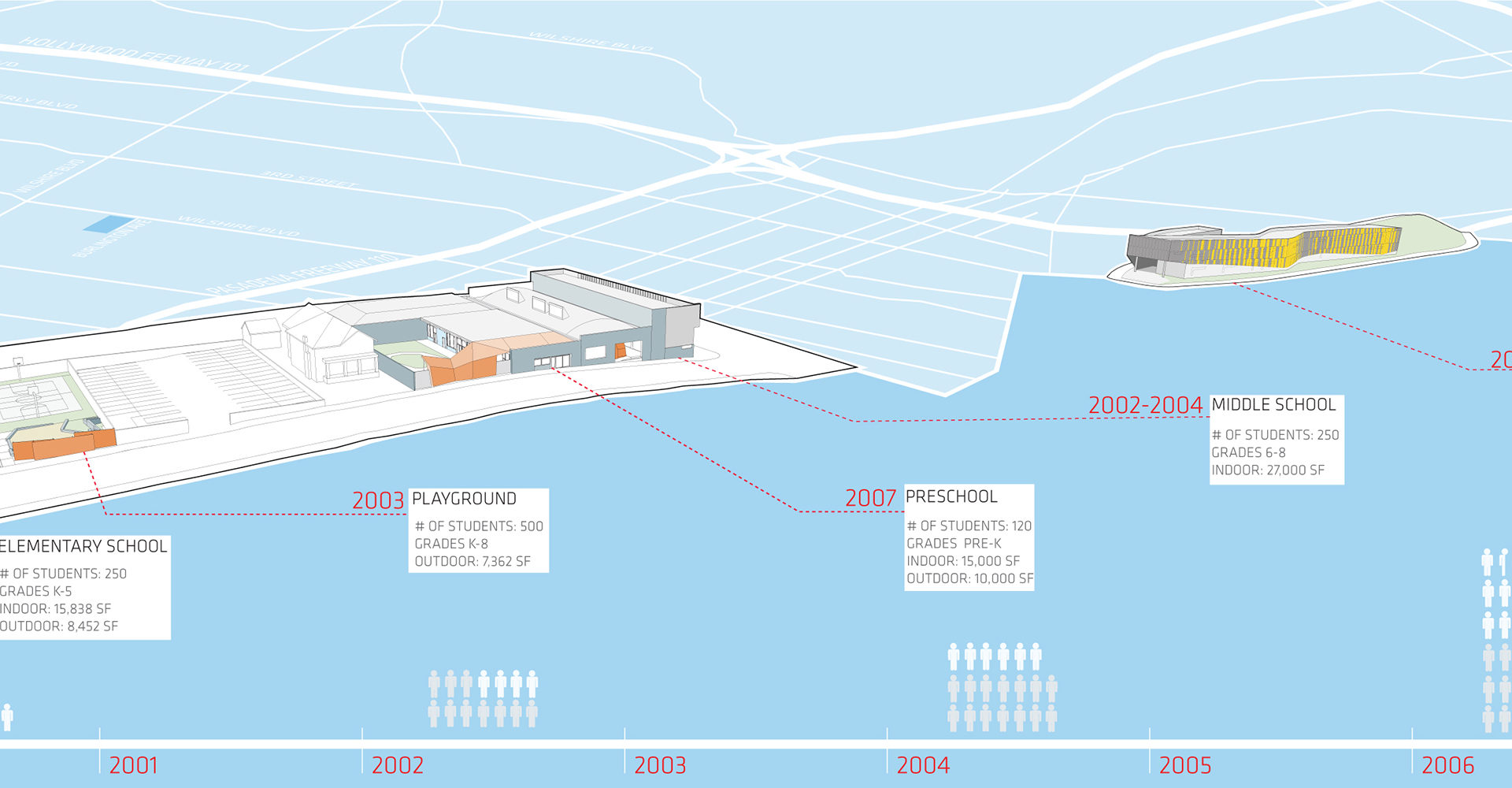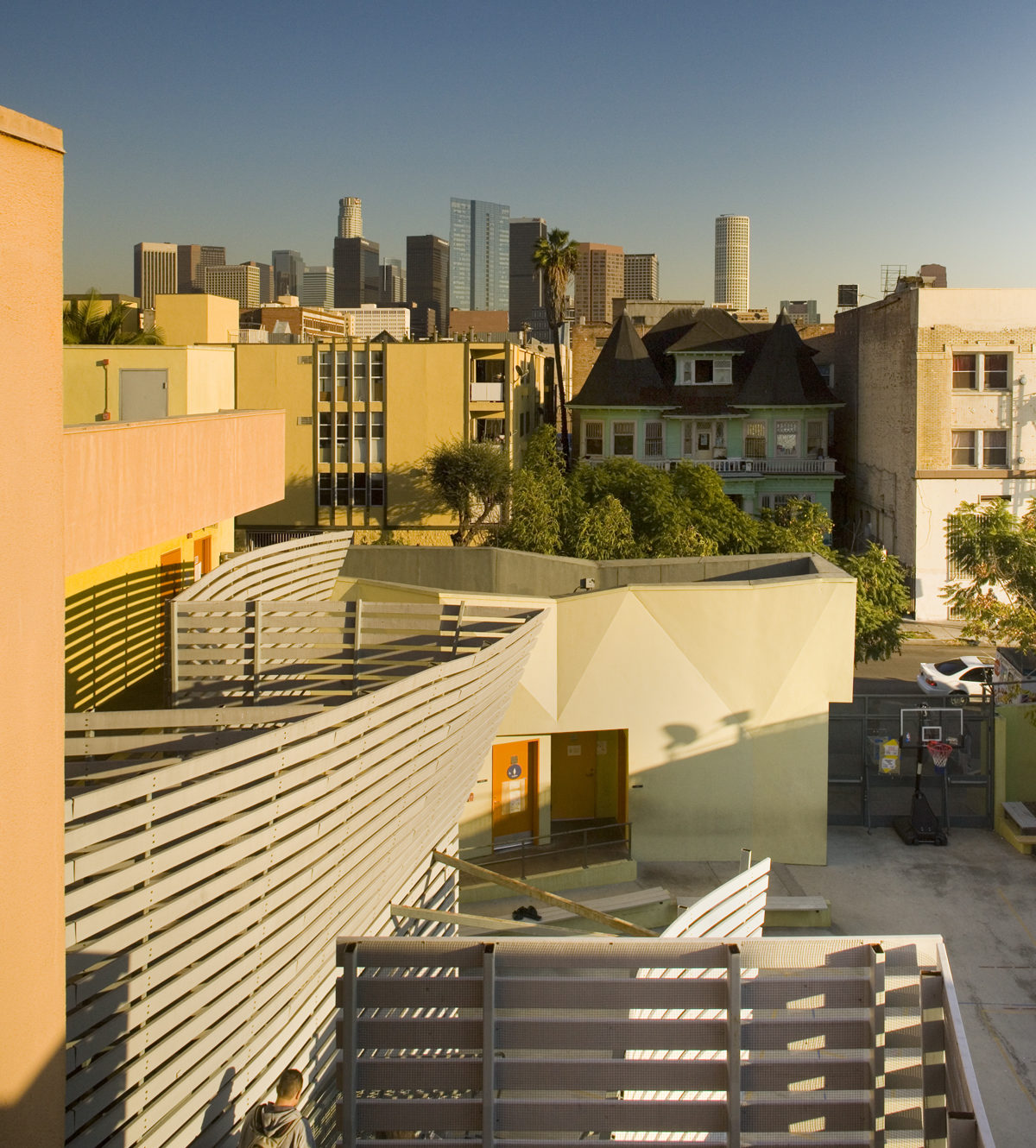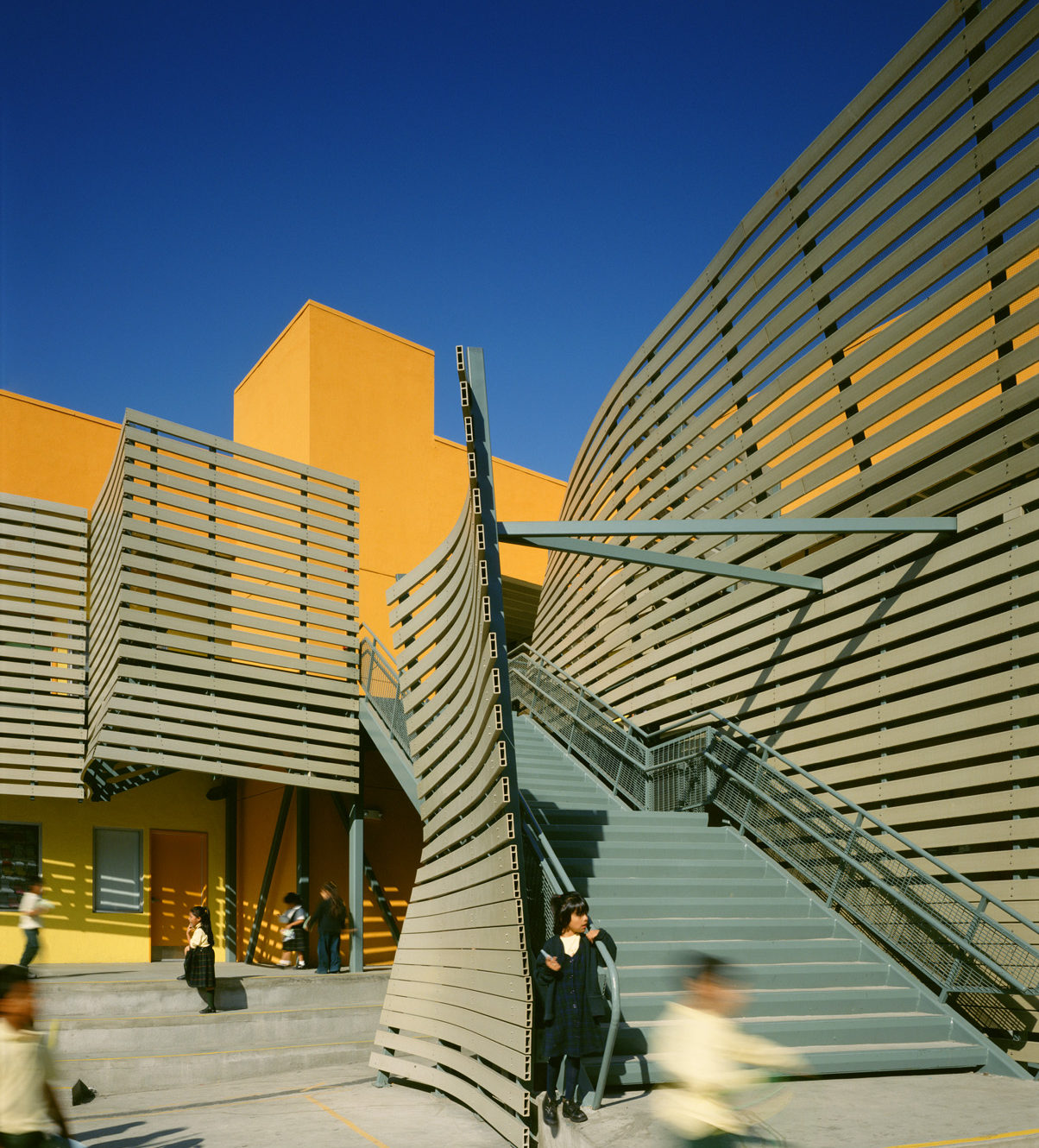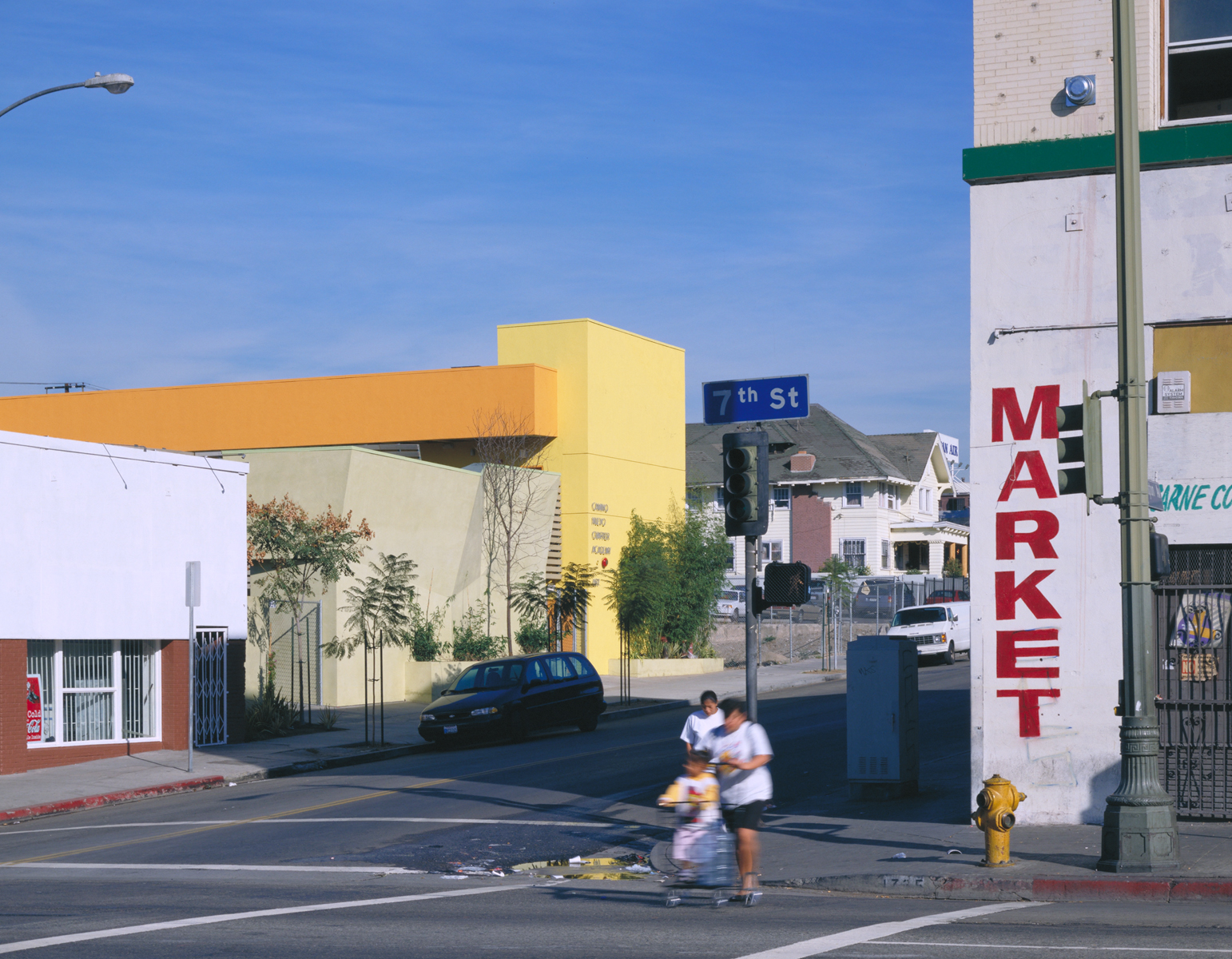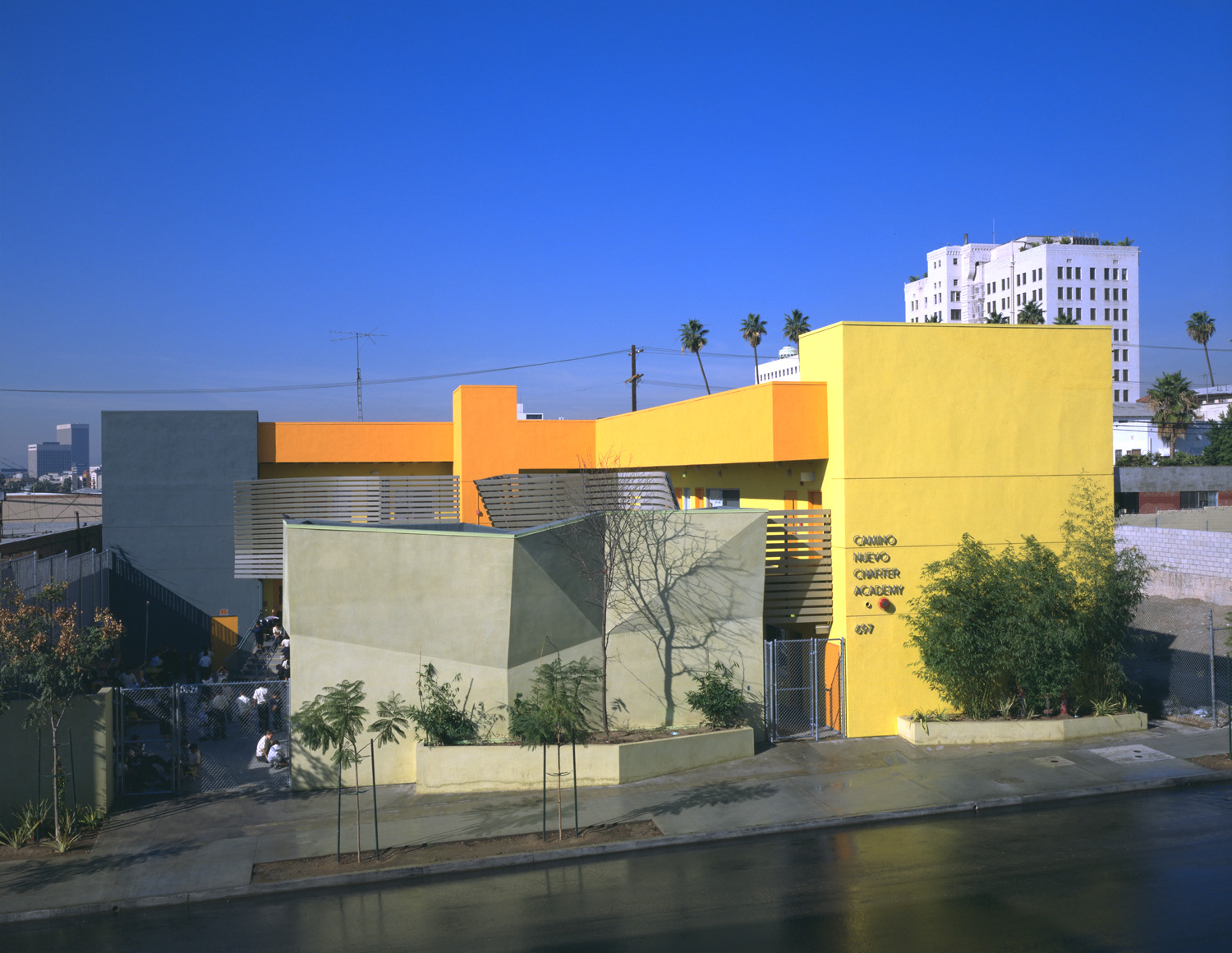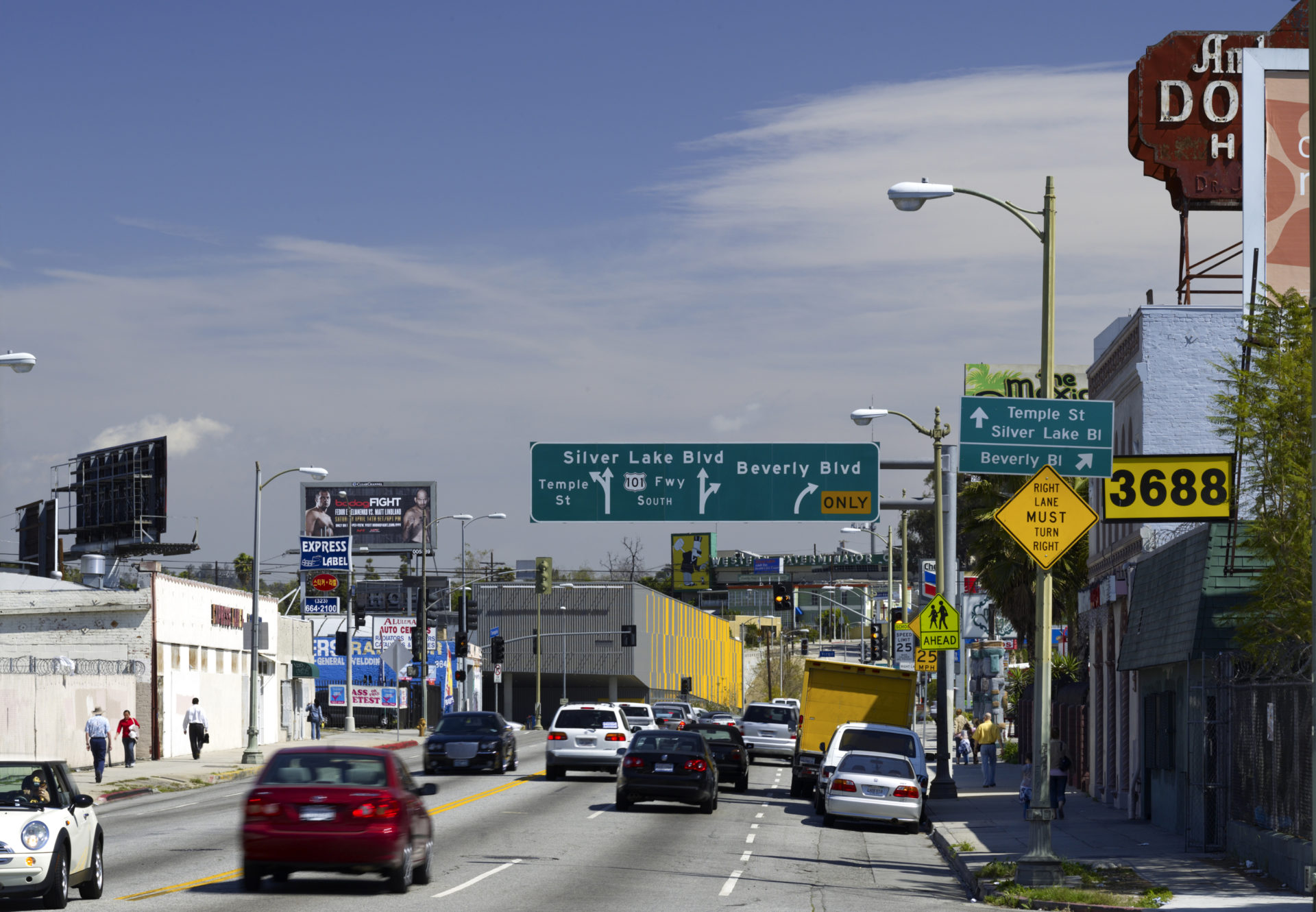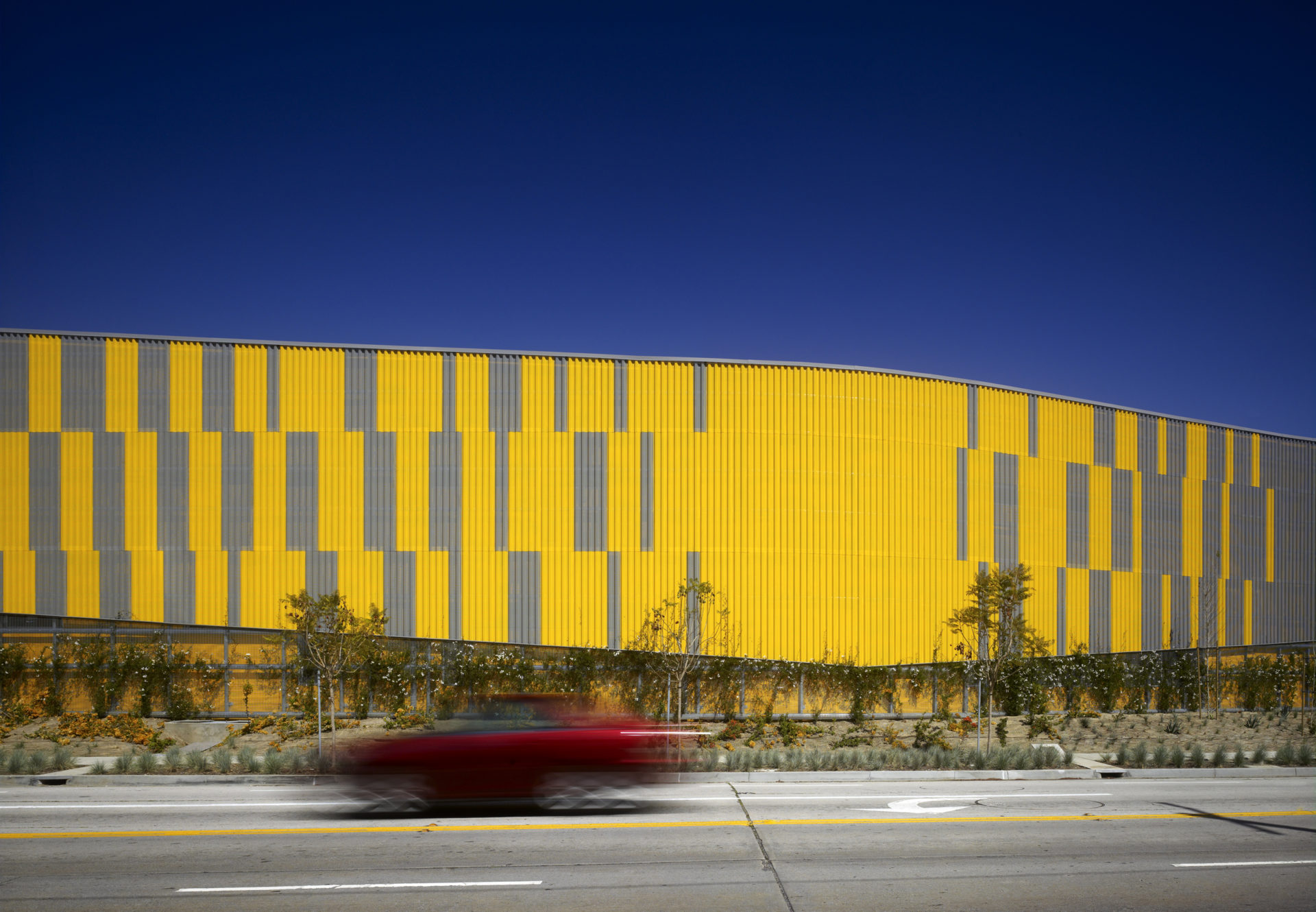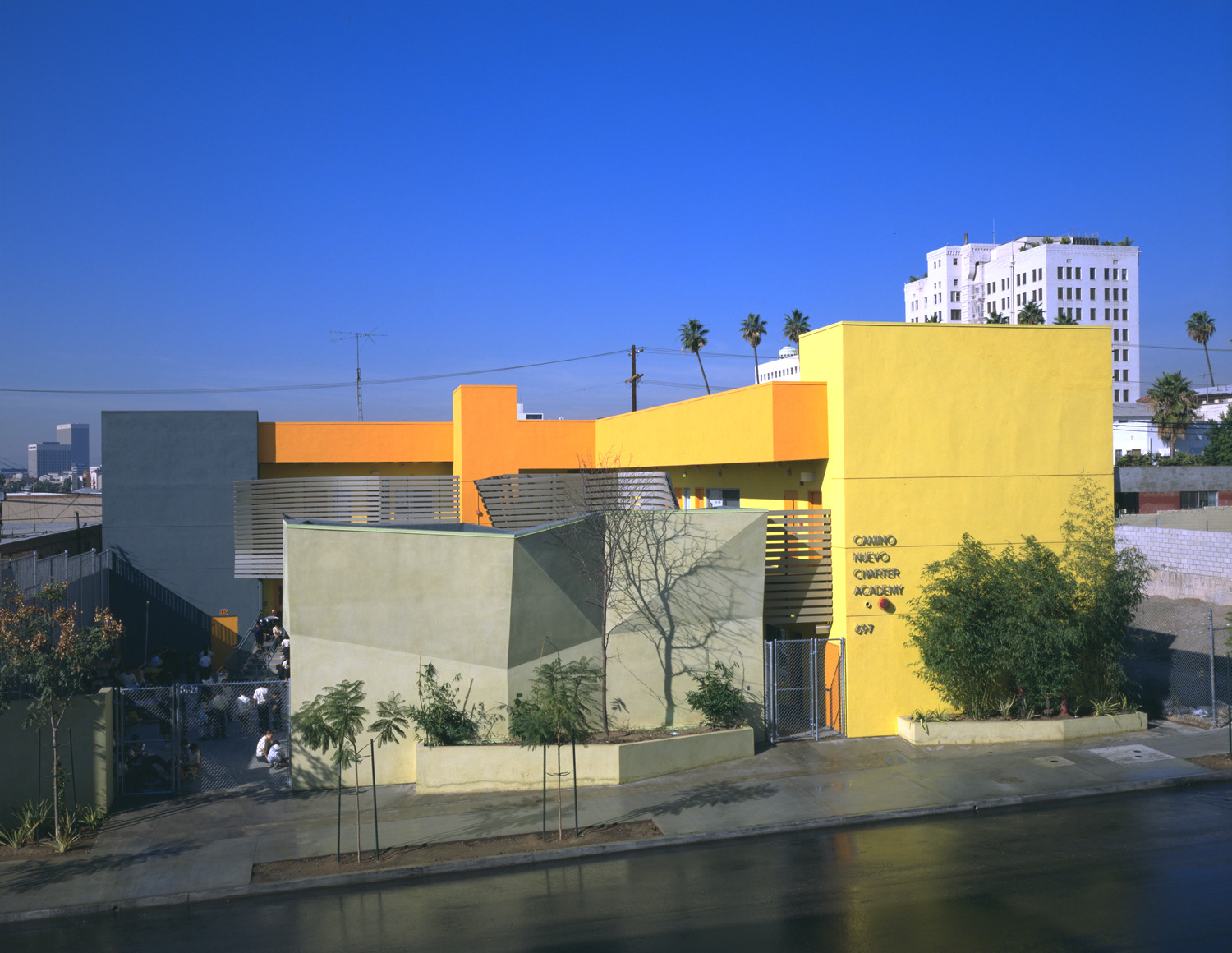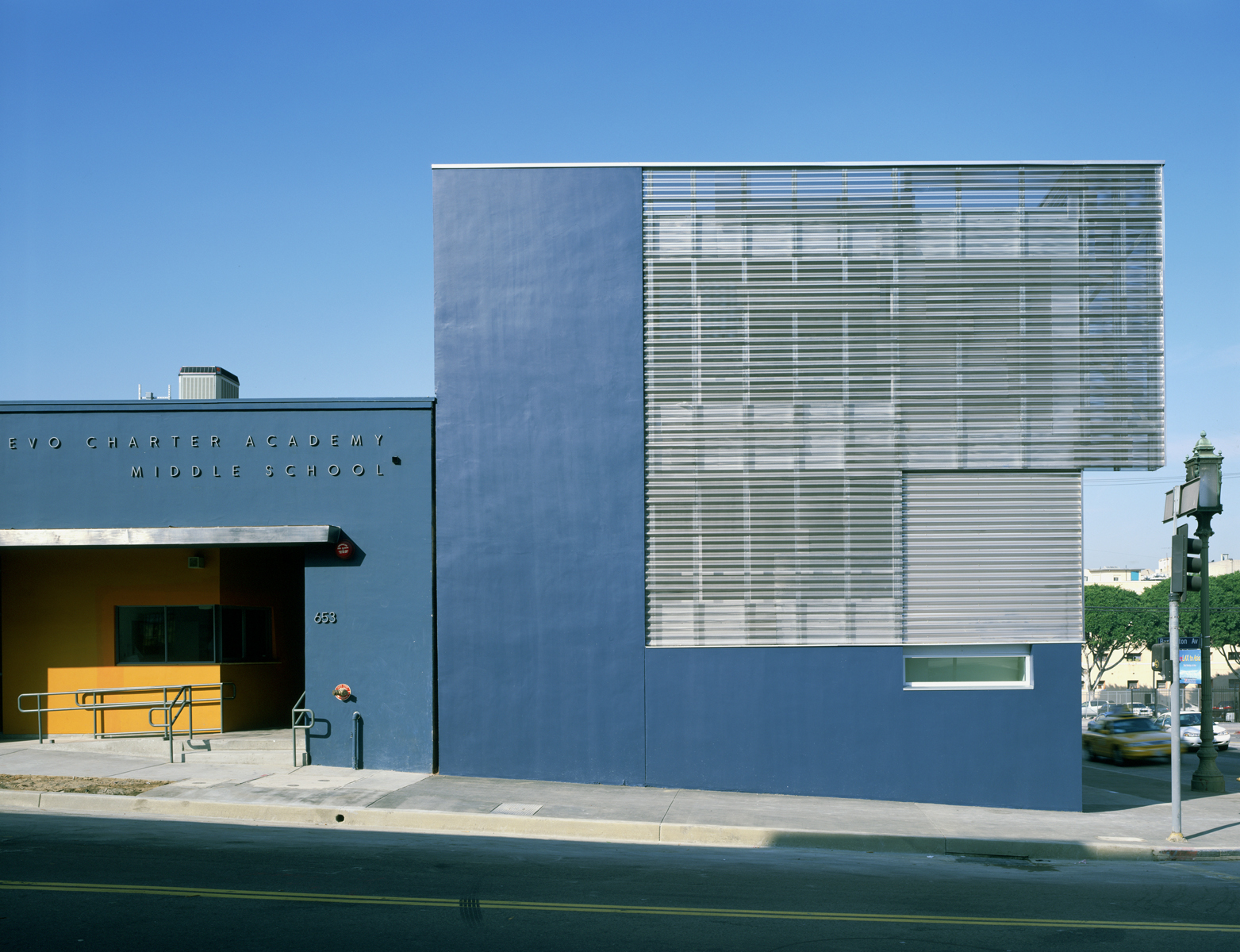Created to alleviate crisis conditions and overcrowding in local schools, the Camino Nuevo Elementary School is the first of a series of projects kdA developed for the Pueblo Nuevo Development, a Los Angeles non-profit community investment organization founded by Dr. Philip Lance in 1993.
Reclaiming Overlooked Urban Resources Camino Nuevo Charter Academy
One of kdA’s longest and most productive collaborations has been with Pueblo Nuevo Education and Development Group, a Los-Angeles non-profit community investment organization that today supports eight Camino Nuevo Charter Academy campuses—three designed by kDA and built between 2000 and 2006.
Founded by Dr. Philip Lance in 1993, Pueblo Nuevo Development began with the stated goal of creating economic opportunities for residents of the MacArthur Park neighborhood, one of the poorest and most densely populated neighborhoods in Los Angeles, inhabited primarily by recent immigrants from Mexico, Guatemala, El Salvador and other Central American countries. After building the successful Pueblo Nuevo Enterprises, a janitorial services company staffed and cooperatively owned by area residents, the development group looked to address one of the community’s most pressing concerns: the poor quality of their children’s education. In 1998 Lance, a community activist, organizer and former Episcopalian priest, began laying the groundwork for what would become the first Camino Nuevo Charter Academy campus: CNCA Elementary (joined shortly after by CNCA Middle), occupying the MacArthur Park city block on Burlington Avenue between Seventh Street and Wilshire Avenue.
Selected by the Pueblo Nuevo Development board through a competitive RFP process, kdA faced a considerable challenge: to create an engaging school environment that would house an innovative educational program, foster community participation, and become a highly visible community landmark, “inviting and invigorating to the local community,” all within a limited budget and the severe space constraints and structural realities of the Burlington Avenue site.
The first phase of the project—CNCA Elementary—was conceived in two parts: the existing abandoned mini-mall on the site, which retained its basic L-shaped form, and the bathroom addition that creates a new entry and face to the street. In reusing and renovating the mini-mall and parking lot, this commercial building was transformed into an inviting, 12-classroom elementary school focused around a secure courtyard. The design of the elementary school consists of three main elements: a new freestanding extension which widens the upstairs passageways (allowing ambient light into the classrooms), the sloping parking lot converted into a pleasant outdoor assembly and play area, and the curved, recycled wood lattices that shade most of the building.


Created to alleviate crisis conditions and overcrowding in local schools, the Camino Nuevo Elementary School is the first of a series of projects kdA developed for the Pueblo Nuevo Development, a Los Angeles non-profit community investment organization founded by Dr. Philip Lance in 1993.
Design and development of the site was informed by a strategy kdA Founder and Principal Kevin Daly termed the four R’s: Remove, Recover, Reconfigure, and Replace.
The building to be renovated—a dilapidated mini-mall— had sat vacant for an extended period, and one of kdA’s most immediate challenges was to drastically transform the community’s perception of the building and site from derelict commercial building to public institution and urban anchor. It was essential to first remove all conspicuous mini-mall features and oppressive architectural elements that would only serve to reinforce the prevailing image of the worn-down structure.
Second, to recover lost and under-utilized space (additional classroom space was recovered in the existing building by constructing new restroom facilities at the street perimeter in a unit that also helps to enclose the school courtyard from the street).
Third, to reconfigure the space so it enhanced the education program of the school (existing surface parking was reconfigured as space that serves for play, assembly, performance and lunch).
Fourth, to replace unsightly and inappropriate design features to create a new design identity for the building: an existing courtyard façade was replaced with a new exterior infrastructure that combines the functions of exiting, sunshade, benches and an outdoor reading room. CNCA’s building is covered with brightly colored stucco and plaster, creating a unique identity on the street with minimal financial impact, and the materials selected are part of the everyday palette of the local area.
The first phase of the project— the Elementary School which now anchors CNCA’s Burlington campus—was completed and open to students for the 2000 school year, with the second and third phases of the Burlington Avenue master plan—acquisition and development of an adjacent empty lot for play space and the opening of a middle school on the far end of Burlington on the corner of Wilshire—complete by 2003. In 2006, CNCA opened a high school two miles north of the Burlington campus, also designed by kdA.
kdA’s near decade-long collaboration with Pueblo Nuevo Development resulted in numerous accolades, including the prestigious Rudy Bruner Award for Urban Excellence for the Burlington Campus Elementary School and Masterplan and National AIA Honor Awards in both Architecture and Education for CNCA High School.
The Bruner Foundation, in awarding the project their highest honor, the Gold Medal award, in 2003, wrote that “CNCA has made an observable impact in the neighborhood. Aside from adding visual interest and excitement, it has contributed to cleaner and safer streets, and new neighborhood investment” and deemed CNCA a success, representing “innovative thinking in both education and community revitalization.”
Today, there are eight CNCA schools throughout Los Angeles educating 3,600 students from early childhood through high school. Since graduating its first class in 2008, Camino Nuevo has maintained a 90 percent cohort graduation rate, with all seniors meeting admission requirements for the University of California and California State University systems. In 2018, 70% of seniors achieved admission to a four-year university. Only 9%of low-income students nationwide earn a bachelor’s degree within six years. The rate is more than three times higher for Camino Nuevo graduates.
